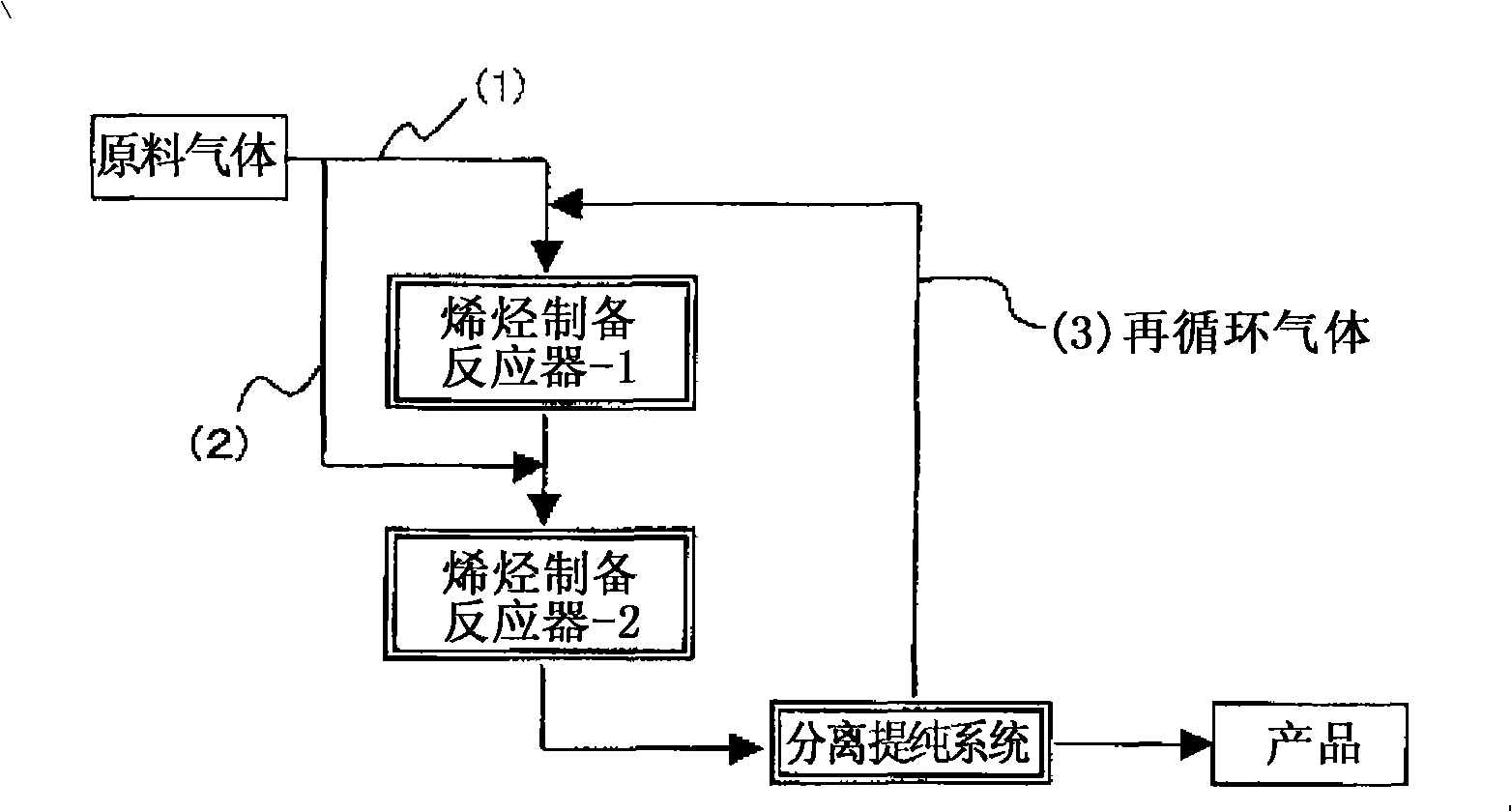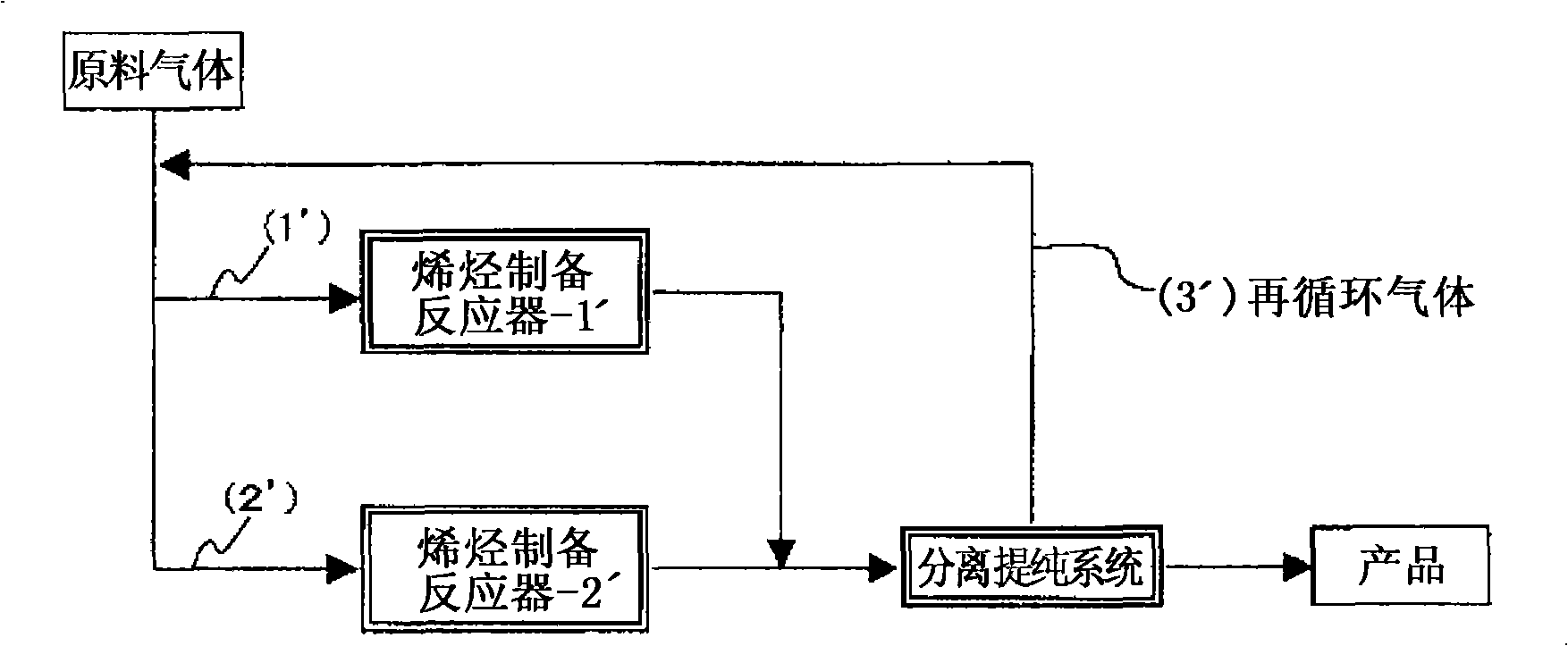Method for production of lower olefin
An olefin and low-level technology, applied in the field of preparation of low-level olefins, can solve problems such as decline, achieve the effects of inhibiting deposition, reducing permanent deactivation, and simplifying operation
- Summary
- Abstract
- Description
- Claims
- Application Information
AI Technical Summary
Problems solved by technology
Method used
Image
Examples
preparation example Construction
[0065] In such a method for producing lower olefins of the present invention, when the temporarily deactivated zeolite catalyst is regenerated, the zeolite catalyst exhibits the same high catalyst activity as when it was first used, and effectively suppresses carbon even after regeneration. It can prevent the deposition of substances on the surface of zeolite catalysts, and can continuously produce lower olefins for a long time. The propylene selectivity refers to the ratio of the amount of propylene produced to the total amount of hydrocarbon products obtained in all reaction systems per unit time. That is, the propylene selectivity in the hydrocarbon product can be represented by the following mathematical formula.
[0066] [mathematical formula 1]
[0067] However, in the present invention, since the hydrocarbon product refers to the total amount of fractions obtained from the outlet of the olefin preparation reactor, "all hydrocarbon products" include the components o...
Embodiment 1
9.50g of Al(NO 3 ) 3 9H 2 O, 10.92g of Ca(CH 3 COO) 2 ·H 2 The zeolite raw material liquid composed of O was dissolved in 750 g of water, and then added while stirring, and 500 g of colloidal silicon dioxide Si-30 sodium silicate (manufactured by Catalyst Chemical Industry Co., Ltd.) was dissolved in 333 g of water, and 177.5 g of 6% by mass NaOH aqueous solution, and 317.6g of 21.3% by mass tetrapropylammonium bromide aqueous solution, and 15.0g (corresponding to the amount of 10% by mass of the zeolite catalyst used for synthesis without seed crystals) as zeolite seed crystals and average A zeolite having an ammonium-type MFI structure with a particle diameter of 0.5 μm (manufactured by Zeolyst, Si / Al atomic ratio: 70) was used to obtain an aqueous gel mixture.
[0101] Next, this aqueous gel mixture was placed in a 3 L autoclave, and stirred at 160° C. for 18 hours under its own pressure to perform hydrothermal synthesis.
[0102] The white solid product produced by...
Embodiment 2
PUM
| Property | Measurement | Unit |
|---|---|---|
| particle size | aaaaa | aaaaa |
| specific surface area | aaaaa | aaaaa |
| particle size | aaaaa | aaaaa |
Abstract
Description
Claims
Application Information
 Login to View More
Login to View More - R&D
- Intellectual Property
- Life Sciences
- Materials
- Tech Scout
- Unparalleled Data Quality
- Higher Quality Content
- 60% Fewer Hallucinations
Browse by: Latest US Patents, China's latest patents, Technical Efficacy Thesaurus, Application Domain, Technology Topic, Popular Technical Reports.
© 2025 PatSnap. All rights reserved.Legal|Privacy policy|Modern Slavery Act Transparency Statement|Sitemap|About US| Contact US: help@patsnap.com



